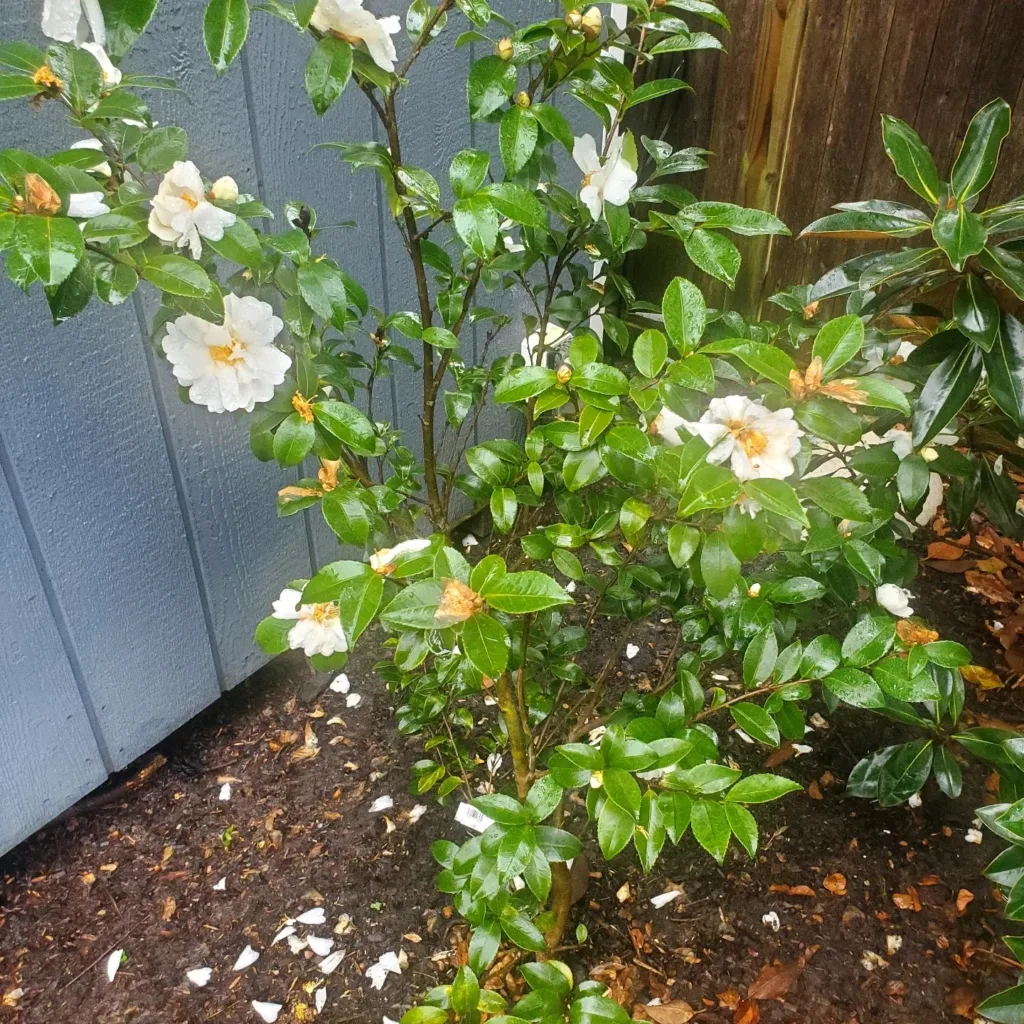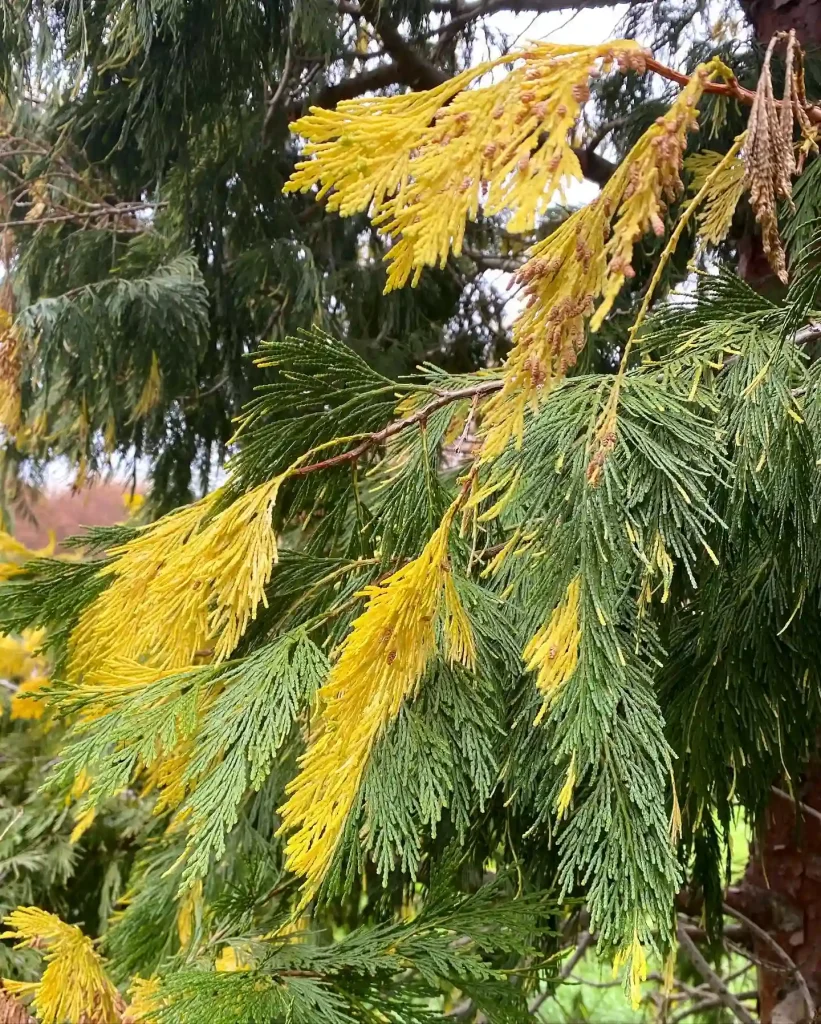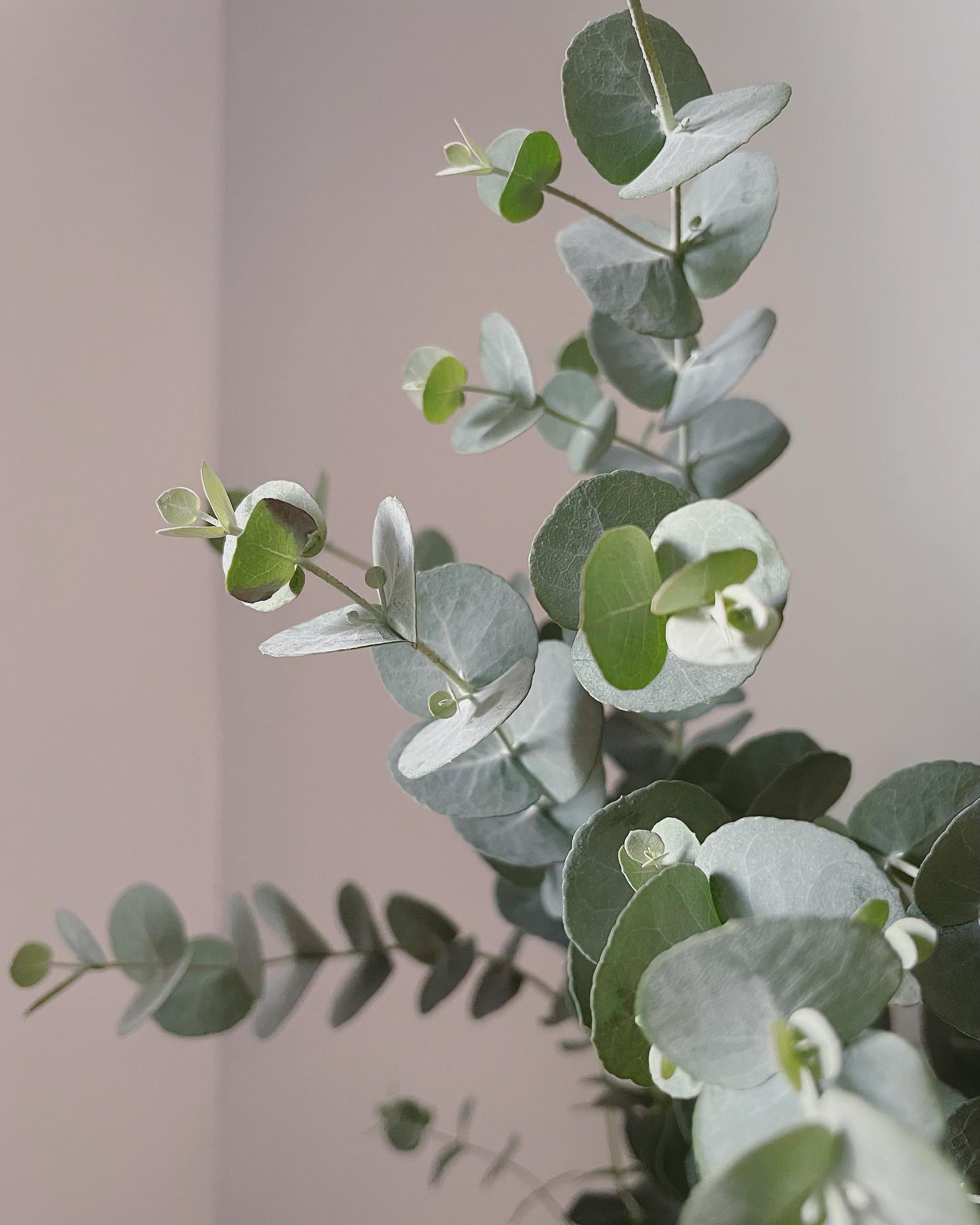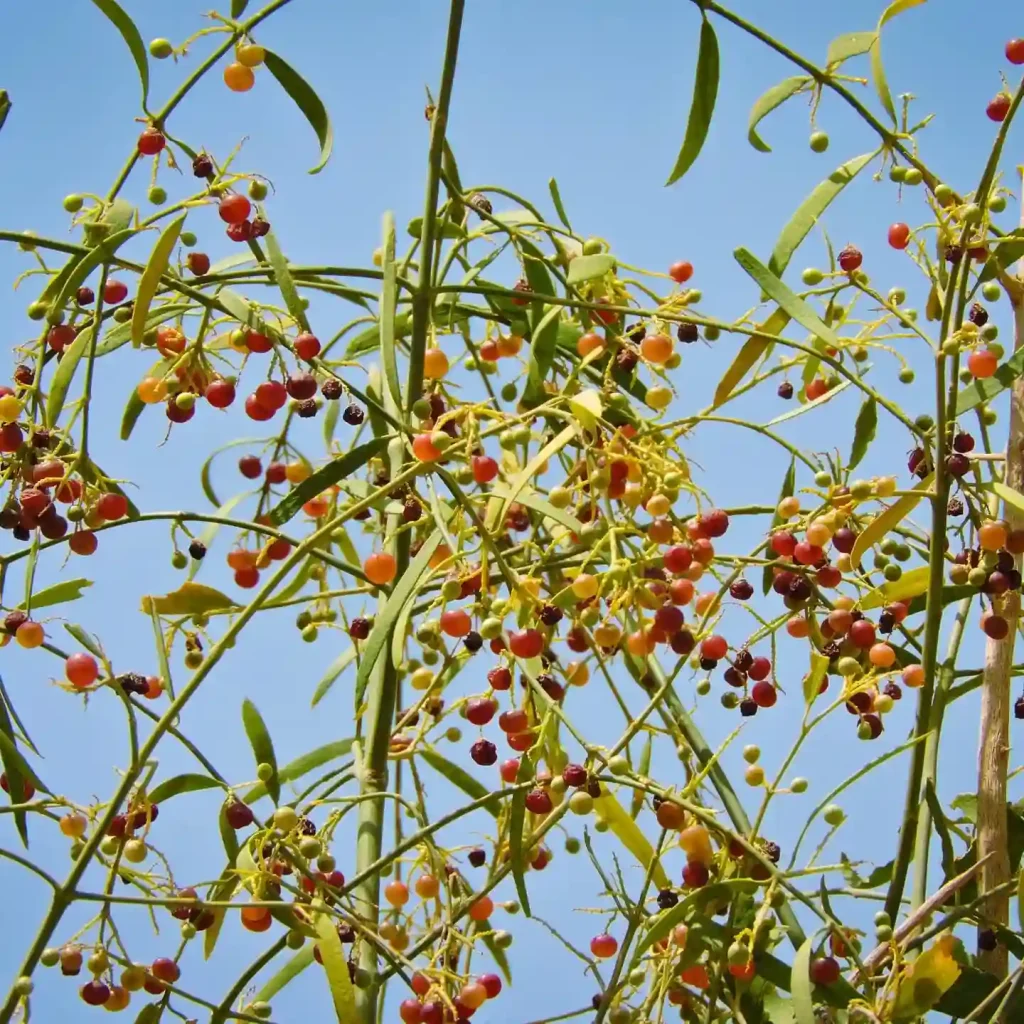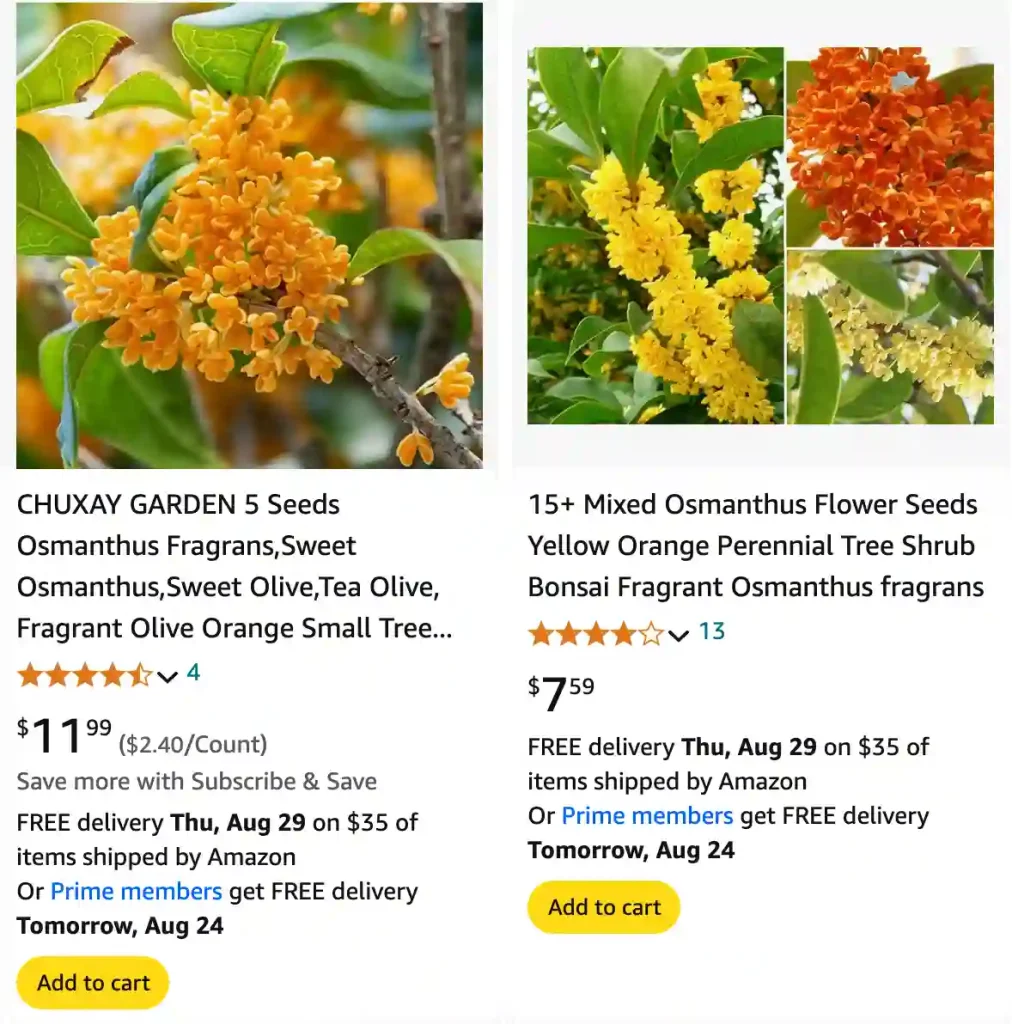
What Is Osmanthus?
Osmanthus is a genus of flowering plants in the Oleaceae family, often appreciated for its fragrant blossoms. These plants are native to Asia, including regions like China, Japan, and Taiwan. Osmanthus varieties can be evergreen shrubs or small trees, and they are known for their glossy, dark green leaves and small, highly aromatic flowers.
Osmanthus species
- Osmanthus armatus Diels
- Osmanthus attenuatus P.S.Green
- Osmanthus austrozhejiangensis Z.H.Chen, W.Y.Xie & Xi Liu
- Osmanthus cooperi Hemsl.
- Osmanthus decorus (Boiss. & Balansa) Kasapligil
- Osmanthus delavayi Franch.
- Osmanthus didymopetalus P.S.Green
- Osmanthus enervius Masam. & T.Mori
- Osmanthus fordii Hemsl.
- Osmanthus fragrans Lour. Plant FAQs: Osmanthus Fragrans var. Aurantiacus
- Osmanthus gracilinervis L.C.Chia ex R.L.Lu
- Osmanthus hainanensis P.S.Green
- Osmanthus henryi P.S.Green
- Osmanthus heterophyllus (G.Don) P.S.Green Plant FAQs: Osmanthus Heterophyllus
- Osmanthus insularis Koidz.
- Osmanthus iriomotensis T.Yamaz.
- Osmanthus kaoi (T.S.Liu & J.C.Liao) S.Y.Lu
- Osmanthus lanceolatus Hayata
- Osmanthus pubipedicellatus L.C.Chia ex H.T.Chang
- Osmanthus reticulatus P.S.Green
- Osmanthus rigidus Nakai
- Osmanthus serrulatus Rehder
- Osmanthus suavis King ex C.B.Clarke
- Osmanthus urceolatus P.S.Green
- Osmanthus venosus Pamp.
- Osmanthus yunnanensis (Franch.) P.S.Green
What Does Osmanthus Smell Like?
One of the most captivating features of Osmanthus is its fragrance. The scent is often described as a blend of peach, apricot, and floral notes. It’s sweet and heady but not overwhelming. This delightful aroma makes Osmanthus a popular choice for perfumed products and adds an enchanting quality to gardens.
What Does Osmanthus Taste Like?
The taste of Osmanthus is as intriguing as its smell. Osmanthus flowers, when used in culinary applications, have a sweet, slightly fruity flavor. They are often used in Asian cuisine to flavor desserts, teas, and syrups. The subtle sweetness and floral notes can elevate dishes and beverages, providing a unique taste experience.
What Is Osmanthus Tea?
Osmanthus tea is a fragrant herbal tea made from the dried flowers of the Osmanthus plant. This tea is enjoyed for its delicate flavor and aromatic qualities. It is commonly consumed in East Asia and is known for its potential health benefits, including its soothing properties and possible aid in digestion.
Does Osmanthus Tea Have Caffeine?
No, Osmanthus tea does not contain caffeine. It is a herbal tea, made from the flowers rather than tea leaves, so it offers a caffeine-free alternative to traditional teas. This makes it a great option for those sensitive to caffeine or looking to enjoy a calming drink before bedtime.
Can You Grow Osmanthus in a Pot?
Yes, you can grow Osmanthus in a pot. This is a great option for those with limited garden space or for those who want to grow Osmanthus indoors. When growing Osmanthus in a pot, ensure that the container has good drainage and use a well-draining potting mix. Regular pruning may be necessary to keep the plant healthy and manageable.
How Fast Does Osmanthus Grow?
Osmanthus plants are relatively slow-growing compared to other shrubs. They can take several years to reach their full size, which can be up to 10 feet tall or more, depending on the species and growing conditions. Patience is key when growing Osmanthus, but the wait is worth it for the beautiful flowers and fragrance.
Are Osmanthus Roots Invasive?
Osmanthus roots are generally not considered invasive. They typically grow in a contained manner and do not spread aggressively. However, it’s always good practice to monitor the growth of any plant in your garden to ensure it does not encroach on other plants or structures.
Does Osmanthus Grow in Shade?
Osmanthus plants prefer full sun to partial shade. While they can tolerate some shade, they generally perform best with plenty of sunlight. In shadier conditions, their growth may be slower, and the flowering may be less abundant. Choosing a location with dappled sunlight or morning sun can be ideal.
How Big Does Osmanthus Grow?
Osmanthus can vary in size depending on the species. Some varieties are small shrubs reaching around 3 to 4 feet in height, while others can grow into larger trees up to 20 feet tall. The growth size is influenced by the specific type of Osmanthus, as well as the growing conditions and care provided.
Osmanthus vs. Chrysanthemum
While Osmanthus and Chrysanthemum both produce beautiful flowers, they are quite different in their characteristics. Chrysanthemums, often referred to as mums, are known for their bright, colorful blooms and are commonly used in floral arrangements. Osmanthus, on the other hand, is valued more for its fragrance than its visual appeal. Chrysanthemums are herbaceous plants, while Osmanthus is a woody shrub or small tree.
Osmanthus vs. Jasmine
Osmanthus and Jasmine are both renowned for their lovely scents, but they belong to different plant families. Jasmine belongs to the Oleaceae family like Osmanthus but is a more versatile plant found in various forms such as vines and shrubs. Jasmine’s scent is often described as sweet and exotic, while Osmanthus has a more subtle, fruity fragrance. Both are used in perfumes and teas, but Osmanthus is particularly noted for its unique taste and smell.
Osmanthus vs. Dong Ding
Dong Ding, also known as Dong Ding Oolong, is a type of tea rather than a plant. Comparing Osmanthus to Dong Ding is like comparing apples to oranges; Osmanthus is a plant with aromatic flowers, while Dong Ding is a semi-fermented tea known for its rich, complex flavors. Osmanthus flowers are sometimes used to flavor Dong Ding tea, combining the floral notes of Osmanthus with the deep, roasted flavors of the Oolong tea.
How to Care for Osmanthus?
Caring for Osmanthus involves providing it with the right conditions. Ensure it has well-draining soil and receive adequate sunlight. Water regularly but avoid waterlogging, as excessive moisture can lead to root rot. Prune the plant to maintain its shape and encourage new growth. Fertilize during the growing season to promote healthy blooms.
How to Propagate Osmanthus?
Osmanthus can be propagated through cuttings or by layering. To propagate via cuttings, take a healthy shoot from a mature plant, dip it in rooting hormone, and plant it in a pot with well-draining soil. Keep the cutting in a warm, humid environment until roots develop. Layering involves bending a branch to the ground, covering it with soil, and waiting for it to root before separating it from the parent plant.
What to Plant With Osmanthus?
Osmanthus pairs well with other shrubs and plants that complement its growth conditions. Consider planting it with evergreen shrubs like Boxwood or Holly to create a lush, year-round display. Ornamental grasses or low-growing perennials can also enhance the landscape around Osmanthus, providing contrast and texture.
Is Osmanthus Toxic?
No, Osmanthus is not known to be toxic to humans or pets. It is generally safe to grow in gardens and enjoy in teas or culinary dishes. However, as with any plant, it’s always good to ensure that pets or children do not consume large quantities of plant material.
Benefits of Osmanthus
Osmanthus offers several benefits, including its beautiful fragrance, which can enhance garden spaces and indoor environments. The flowers are also used in traditional medicine for their potential calming effects. Osmanthus tea is valued for its soothing properties and may aid in digestion.
Common Problems with Osmanthus
Common problems with Osmanthus include pest issues such as scale insects and aphids. Additionally, poor drainage can lead to root rot. Ensuring proper care and monitoring the plant regularly can help mitigate these issues and keep your Osmanthus healthy and thriving.
If i die, water my plants!
